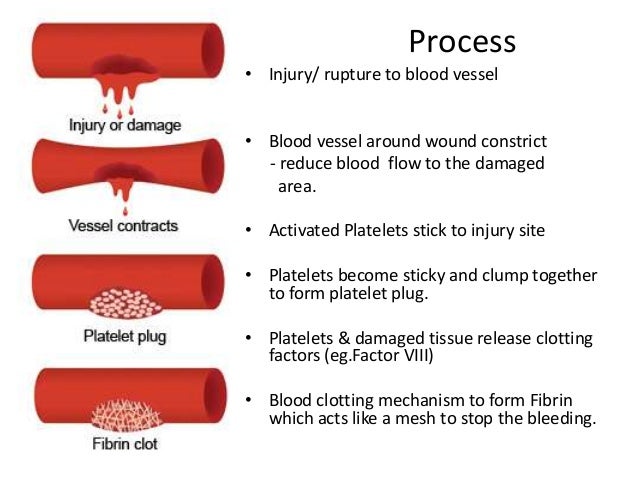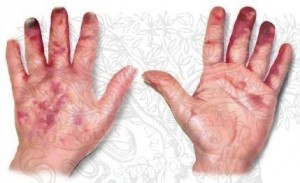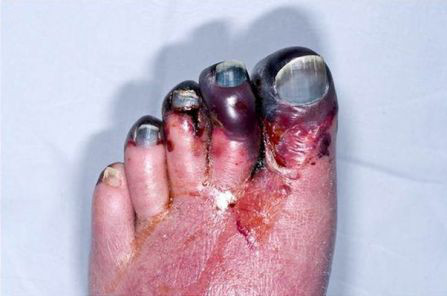PLATELET, by: Maldanie anak Sulaiman
PLATELET
Hello everyone 😊😊 !!!!! Today i want to share with all of you about platelet.
Have you wonder how our blood can stop from flowing after the injury?
What is the mechanism that help the blood from being flowing?
What is the disease that related to platelet? and how it can be treated?
What is the disease that related to platelet? and how it can be treated?
If you want to know more, let read about the following below for your understanding.
INTRODUCTION
Firstly, let me explain what is the platelet exactly. Platelet is the small cells that derived from
precursor megakaryocytes. Platelet can be found inside our blood. Platelet is the once of the plasma
in our blood rather than red blood cells and white blood cells. Platelet do not have nucleus and it
shape is oval. The life span of platelet is 8-12 days.

Platelet is the one of the plasma that help wounds heal and bleeding by forming blood clotting.
Blood clotting is the condition where the blood flowing had been stop from bleeding.
The below show the process of blood clotting:

more than 450,000 platelets is a condition called thrombocytosis; having less than 150,000 is known
as thrombocytopenia
Do you had face with problem that your blood over flow after the injury? If you had experience
with that problem, that mean you had suffer with Thrombocytopenia. Thrombocytopenia is the
platelet disorder. This mean that, your blood had low number of platelet. This will cause serious
bleeding. The serious bleeding occur due to less of heparin function as the anticoagulant.

shape is oval. The life span of platelet is 8-12 days.
Platelet
Platelet is the one of the plasma that help wounds heal and bleeding by forming blood clotting.
Blood clotting is the condition where the blood flowing had been stop from bleeding.
The below show the process of blood clotting:

PLATELET DISORDER
A normal platelet count ranges from 150,000 to 450,000 platelets per microliter of blood. Havingmore than 450,000 platelets is a condition called thrombocytosis; having less than 150,000 is known
as thrombocytopenia
Do you had face with problem that your blood over flow after the injury? If you had experience
with that problem, that mean you had suffer with Thrombocytopenia. Thrombocytopenia is the
platelet disorder. This mean that, your blood had low number of platelet. This will cause serious
bleeding. The serious bleeding occur due to less of heparin function as the anticoagulant.

- How thrombocytopenia can be treated?
is severe, the doctor may prescribe treatment such as medicines, blood or platelet transfusion or
splenetomy.
- Medicines
Your doctor may prescribe corticosteroids, also called steroids for short. Steroids may slow platelet
destruction. These medicines can be given through a vein or by mouth. One example of this type of
medicine is prednisone. The steroids used to treat thrombocytopenia are different from illegal
steroids taken by some athletes to enhance performance.Your doctor may prescribe immunoglobulins
or medicines like rituximab to block your immune system. These medicines are given through a
vein. He or she also may prescribe other medicines, such as eltrombopag or romiplostim, to help
your body make more platelets. The former comes as a tablet to take by mouth and the latter is given
as an injection under the skin.
- Blood or Platelet Transfusions
Blood or platelet transfusions are used to treat people who have active bleeding or are at a high risk
of bleeding. During this procedure, a needle is used to insert an intravenous (IV) line into one of
your blood vessels. Through this line, you receive healthy blood or platelets.
For more information about this procedure, go to the Health Topics Blood Transfusion article.
- Splenectomy
A splenectomy is surgery to remove the spleen. This surgery may be used if treatment with
medicines doesn't work. This surgery mostly is used for adults who have immune thrombocytopenia.
(ITP). However, medicines often are the first course of treatment.
SYMPTOM & SIGNS:
1. Purpura and Petechiae
2. Other signs of external bleeding include:
- Prolonged bleeding, even from minor cuts
- Bleeding or oozing from the mouth or nose, especially nosebleeds or bleeding from brushing your teeth
- Abnormal vaginal bleeding (especially heavy menstrual flow)
But guys, there also disease that related to has many platelet in the blood. It is Thrombocytosis.
This is the disorder of our body produces to many platelet. The disorder is called as reactive
trombocytosis when it is cause by underlying condition such as infection.

SYMPTOMS & SIGNS:
- Headache
- Dizziness or lightheadedness
- Chest pain
- Weakness
- Fainting
- Temporary vision changes
- Numbness or tingling of the hands and feet
CAUSES:
Bone marrow; spongy tissue inside your bones; contains stem cells that can become red blood cells,
white blood cells or platelets (thrombocytes). Platelets stick together, helping blood to form a clot
that stops bleeding when you damage a blood vessel, such as when you get a cut. A normal platelet
count ranges from 150,000 to 450,000 platelets per microliter of blood. If you have thrombocytosis
caused by a bone marrow disorder (essential thrombocythemia), your bone marrow overproduces the
cells that form platelets (megakaryocytes), releasing too many platelets into your blood. In essential
thrombocythemia, there is a much higher risk of clotting or bleeding complications. Therefore, if
your blood test results reveal a high platelet count, it's important for your doctor to determine
whether you have essential thrombocythemia or reactive thrombocytosis.
- What is the treatment for trombocytosis?
1. Cytoreductive therapy
Cytoreductive therapy is used to reduce the risk of hemorrhage for patients with platelet counts
above 1 million/μL.
2. Surgical Care
Patients with essential thrombocytosis (primary thrombocythemia) undergoing surgery are at
increased risk for bleeding and thrombosis. Administer cytoreductive therapy to decrease the platelet
count to the reference range before surgery. Avoid splenectomy because it can markedly increase the
platelet count and the risk of both hemorrhagic and thrombotic events.
HEALTY LIFESTYLES TIPS
Tip to maintain platelet count naturally:
1. Papaya

For one, ripe papaya fruit itself is a great way to increase platelets. But the carica papaya leaf, as we just alluded to, also makes for a great concoction that is equally, if not more powerful, at boosting platelet count.
There are two ways to go about this:
1. You could prepare papaya leaf tea by boiling the papaya leaves, and consuming two tablespoons of this extract twice a day.
2. Alternatively, take a few papaya leaves (minus the stalk) and crush them with a pestle and mortar. Drink two tablespoons of this bitter juice twice a day.
2. Pomegranate

As with all red fruits, the seeds of this delicious fruit are packed with iron, an essential mineral for combating low platelet count. Pomegranate has been used since the ancient times for its healthy and medicinal properties. It is also rich in minerals, antioxidants and vitamin C which is a well-known immune system booster.

Pumpkin is loaded with vitamin A which helps to support proper platelet development and regulation of proteins made by our body cell.
Vitamin A is essential for the synthesis of healthy platelets and protein in the body. Make it a point to consume foods rich in vitamin A on a regular as they help to sustain normal body functioning. Foods such as carrots, sweet potatoes and kale will boost your platelet count, in addition to providing a host of other health benefits.
5. Folate-rich foods

Folate, aka vitamin B9, is essential for cell growth and reproduction, and its deficiency in the body could lead to a reduction in blood platelets. A healthy adult should, on average, be consuming at least 400 mg of folate each day.
Examples of foods rich in folate are oranges, spinach, asparagus, beans, raisins and fortified cereals.
6. Vitamin K-rich food





Blood clotting would not be possible without vitamin K as it is responsible for activating proteins to stimulate blood clot formation. This is why you need to consume foods rich in vitamin K when your platelet levels drop.
Leafy greens like spinach, lettuce and parsley are an excellent source of this vitamin, so you need to make them a regular feature in your diet.
Kale, broccoli, cauliflower, Swiss chard, seaweeds, olive, soybean and eggs will also work your vitamin K levels a treat.
7. Wheagrass

Wheatgrass has been found to be an amazingly effective remedy for low platelet count, with amazing nutritional and medicinal value to boot. This is attributed to its high levels of chlorophyll whose molecular structure bears close semblance to the hemoglobin molecule in human blood. Wheatgrass will boost more than just your platelet count. Regular consumption of the juice from this super plant been found to significantly bump up the levels of red and white blood cells, differential white blood cell count, as well as hemoglobin itself.
8. Milk

Milk is bursting with calcium, a mineral that works in cahoots with vitamin K and fibrinogen (a milk protein) to increase platelets and improve blood’s ability to form clots. In addition to fresh milk, incorporating other milk products such as yoghurt, cheese and organic dairy products is sure to keep your calcium levels at an optimum.
9. Lean proteins

Lean proteins are an excellent source of vitamin B-12 and zinc, both of which play a key role in the reversal of low platelet count conditions. For maximum benefit, include in your diet lean meat like beef, turkey, chicken and fish. Oysters and crab are also known for their generous content of zinc. Speaking of fish, for all its benefits, Omega 3 has been shown to inhibit platelet activation in the blood. so it’s best to steer clear of fish oil when you want to increase blood platelets, save for maybe cod liver oil.
QUESTIONS
- What is the function of platelet?
- How the blood clotting process take place?
- What is the platelet disorder?
- List the foods that can help to maintain platelet count naturally?


Comments
Post a Comment